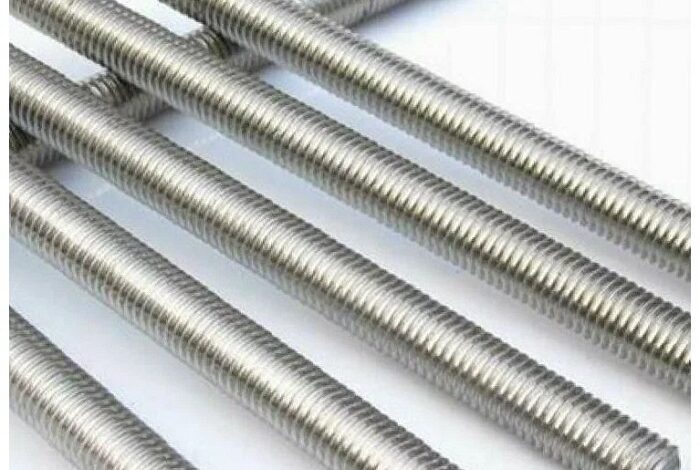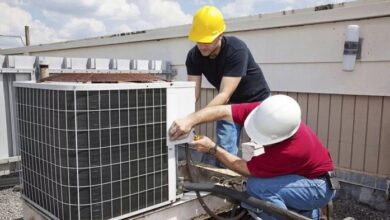Metric rod DIN975: an economical option for your project

Metric rods are used to connect individual elements in structures. DIN975 rods are considered especially reliable and efficient.
Metric DIN975 rods are an integral part of many construction and industrial projects. They are used to connect components in structures made of various materials, which is required in many industries. In this article, we take a detailed look at DIN975 metric rods, focusing on their cost effectiveness and practicality for your project.
Content
1. Introduction to DIN975 metric rods
2. What is DIN975?
3. Application of DIN975 metric rods
4. Advantages of using DIN975 metric rods
5. Economic aspect of DIN975 metric rods
6. Conclusion
1. Introduction to DIN975 metric rods
DIN 975 metric rods are an integral part of many construction and industrial projects. They are used to connect components in structures made of a variety of materials, from metals to wood, which is required in many industries. They have different lengths, diameters and threads, which allows them to be used for a variety of tasks. An important characteristic is the DIN975 standard, which defines the parameters and quality of these rods, which makes them popular among construction and industrial professionals. In this section, we will look at the main aspects of DIN975 metric rods, including their purpose, characteristics and the main advantages of using them.
2. What is DIN975?
DIN975 is a German standard that defines the technical requirements for threaded rods used for various purposes in construction, industry and other industries. It includes parameters such as length, diameter, thread pitch, material and mechanical properties of the rods. DIN is derived from the German “Deutsches Institut für Normung” (German Institute for Standardization), indicating that this standard was developed and maintained by a German standardization body.
The DIN975 standard provides unity and uniformity in the production of rods, which simplifies their use and maintenance. It defines the requirements for materials, surface treatment, dimensions and mechanical properties of rods, which makes them compatible with various connection systems and allows them to be used in various operating conditions.
It is well known that the standardization of production contributes to the improvement of product quality, simplifies the interaction between producers and consumers, and also ensures safety and reliability in operation. Therefore, the use of rods that comply with the DIN975 standard becomes an important element of any construction or industrial project.
3. Application of DIN975 metric rods
DIN975 metric rods are widely used in various fields of industry and construction due to their versatility and reliability. Here are some of the main industries where they are used:
- Construction: In construction, metric rods are used to connect various structures and materials. They can be used to secure racks, metal structures, fittings, as well as to create mounts for lighting and other devices.
- Mechanical engineering: In mechanical engineering, metric rods are used to create fasteners in heavy mechanisms and machine installations. They are used for fixing moving parts, lever systems, fixing frames and cases, ensuring the stability and reliability of the equipment.
- Industrial equipment: In industrial equipment, DIN975 rods are used to create connections and fasteners in production lines, technological processes and other devices. They ensure the stability and safety of equipment operation, allowing to ensure uninterrupted operation of production systems.
- Electrical engineering: In the field of electrical engineering, metric rods are used to fasten electrical panels, cabinets, cable trays and other electrical equipment. They make it possible to create reliable and safe connections, which are necessary for the efficient operation of electrical systems.
In general, metric DIN975 rods are important components in construction and industry that ensure reliability, strength and stability of connections in various operating conditions. Their use allows to ensure the safety and efficiency of construction and industrial structures.
4. Advantages of using DIN975 metric rods
DIN975 metric rods are distinguished by a number of advantages that make them attractive for use in construction, industry and other industries. Let’s look at the main advantages of these rods:
- Standardization: Metric DIN975 rods meet well-defined standards, which ensures their uniformity and compatibility with other components. This simplifies the process of selecting and installing fasteners and reduces the risk of errors during construction or installation.
- Reliability: Metric DIN975 rods are made of quality materials and have a standardized thread, which ensures strength and reliability of connections. This allows them to effectively withstand heavy loads and ensures the durability of structures.
- Versatility: With a wide range of sizes, diameters and lengths, metric DIN975 rods can be used in different projects and for different purposes. They are suitable for both light building structures and heavy industrial systems.
- Ease of installation: Metric DIN975 rods are threaded throughout, making them easy to install and fasten. This allows for quick and efficient assembly and repair of construction and industrial structures.
- Economical: Due to their reliability, durability and wide range of applications, metric DIN975 rods are an economical choice for any project. They allow you to reduce maintenance costs and provide an optimal balance between quality and cost.
Therefore, DIN975 metric rods are indispensable elements of construction and industrial projects that ensure reliability, efficiency and economy of tasks.
5. Economic aspect of DIN975 metric rods
The economic aspect of using DIN975 metric rods should be considered in the context of their cost, service life and impact on the overall costs of construction and industrial projects. Below we will consider in detail several key economic aspects of these rods:
- Cost of purchase: Metric DIN975 rods are usually competitively priced compared to other fasteners. Their production in large quantities and compliance with standards helps to reduce the cost of their production, which affects their retail price for end users.
- Service life: DIN975 metric rods are characterized by high quality and durability. They are made of strong materials that withstand heavy loads and operating conditions. This means that they can be used for a long time without the need for frequent replacement, reducing maintenance and repair costs.
- Minimization of assembly and assembly costs: DIN975 metric rods are threaded throughout their length, which simplifies their assembly and assembly. This saves workers time and labor, which in turn can reduce overall costs for construction and industrial projects.
- Overall Savings: Given the above benefits, using metric DIN975 rods can result in overall savings in the construction project budget. Reduced acquisition costs, longer service life and ease of installation can significantly reduce overall project costs and improve project efficiency.
Hence, the economic aspect of DIN975 metric rods demonstrates their benefit to both manufacturers and end users. Reduced acquisition costs, durability and ease of use make them an attractive choice for any construction or industrial project.
6. Conclusion
In this article, we have considered DIN975 metric rods from various points of view of their application, advantages and economic benefits.
DIN975 metric rods are indispensable components in construction, industry and other industries where a reliable and stable connection of various structures and materials is required. They meet high quality standards, which guarantees their reliability and service life.
The main advantages of DIN975 metric rods include their versatility, ease of installation, reliability and cost-effectiveness. Their use allows to reduce the costs of construction and maintenance, while maintaining a high level of quality and efficiency of the project.
The overall conclusion is that metric DIN975 rods are an indispensable element of any construction or industrial project that requires reliable fastening and connection. Their cost-effectiveness, together with their high quality and versatility, make them an important choice for any professional in the field of construction and industry.



